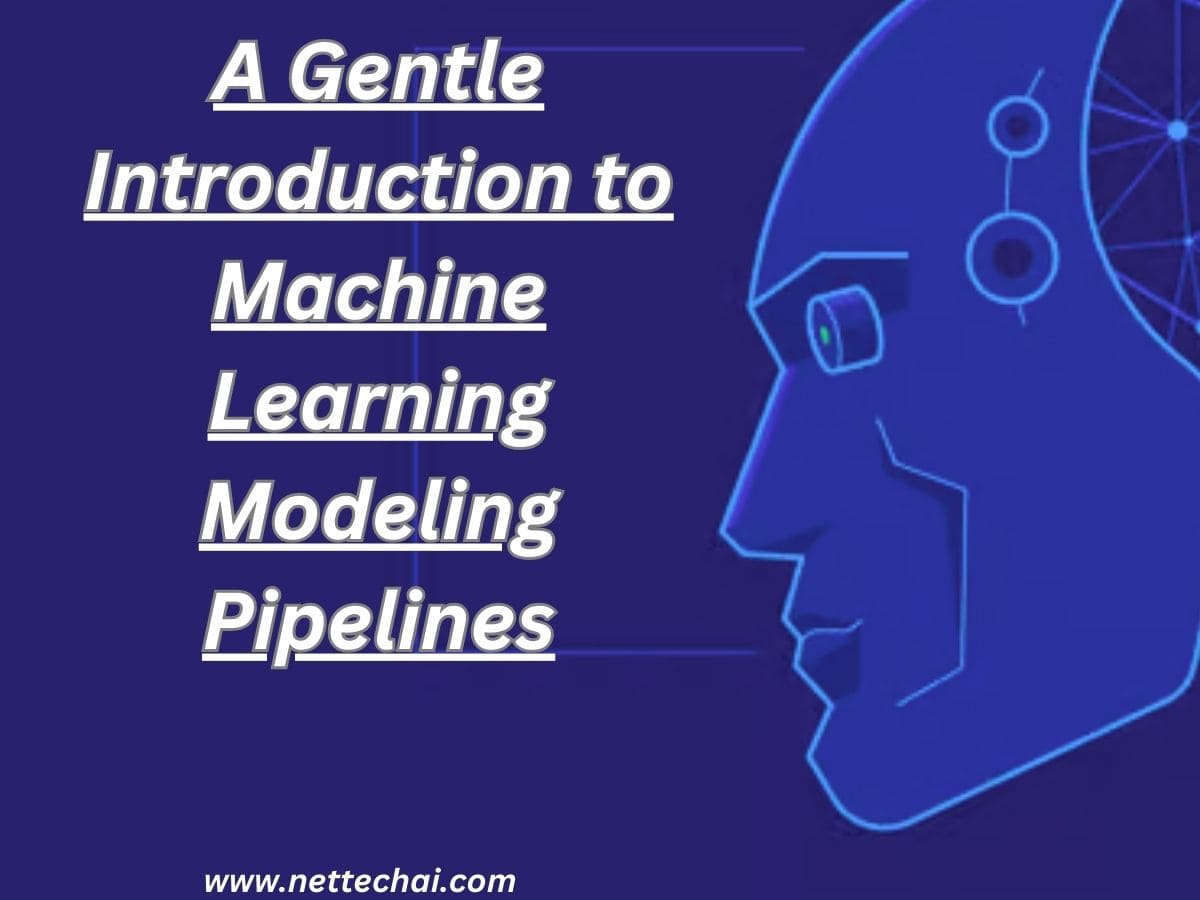Introduction
In the world of Machine Learning, finding a skillful model is just the tip of the iceberg. The process of building and deploying effective machine learning systems is a complex and iterative journey. To streamline this process, machine learning practitioners often rely on modeling pipelines. In this article, we will provide a gentle introduction to Machine learning modeling pipelines, highlighting their importance, components, and implications.
Finding a Skillful Model Is Not Enough
Machine learning is all about creating models that can make predictions or decisions based on data. However, the path to developing a skillful model is not as straightforward as it might seem. Many factors can influence a model’s performance, and finding a good model is just the beginning of the journey.
A skillful model might work well in a controlled environment, but real-world data is often messy and noisy. Thus, it’s crucial to consider how the model will perform in production, where it has to handle unseen data. This is where modeling pipelines come into play.
what are machine learning modeling pipelines
A modeling pipeline is a structured and systematic approach to building machine learning models. It’s a series of interconnected steps that transform raw data into a deployed model. These pipelines are not only essential for developing robust models but also for managing and maintaining them over time.
Key components of a modeling pipeline typically include:
Data Preprocessing:
- Data collection and ingestion
- Data cleaning and handling missing values
- Feature engineering and selection
- Data transformation and normalization
Model Selection:
- Choosing the appropriate algorithm for the task
- Hyperparameter tuning and model optimization
- Cross-validation for assessing model performance
Model Training:
- Training the selected model on the training data
- Evaluating the model on validation data
- Iterative improvement of the model based on feedback
Model Deployment:
- Saving the trained model
- Building a production-ready API or service
- Monitoring and maintaining the deployed model
Implications of a Modeling Pipeline in Machine Learning
The use of a modeling pipeline has several important implications for machine learning practitioners:
- Reproducibility: Modeling pipelines ensure that the entire process, from data preprocessing to model deployment, is reproducible. This is critical for scientific research and business applications where transparency and accountability are paramount.
- Efficiency: Pipelines can save time and effort by automating repetitive tasks. For example, data preprocessing steps can be standardized and reused across different projects.
- Scalability: Pipelines can be scaled to handle large datasets and complex model architectures. They allow for the efficient use of computational resources, making it easier to tackle more challenging tasks.
- Collaboration: Modeling pipelines make it easier for teams of data scientists and engineers to collaborate. Everyone can work on different stages of the pipeline while ensuring compatibility and consistency.
- Maintenance: Once a model is deployed, pipelines help in monitoring its performance, updating it as needed, and managing changes in the data distribution. This is crucial for keeping models relevant and accurate over time.
It’s important to note that the exact components and structure of a modeling pipeline can vary depending on the specific project and organization. However, the core principles of systematic data preparation, model selection, and deployment remain consistent.
What’s the best modeling pipeline to use?
The answer is, it doesn’t matter. There’s no one-size-fits-all pipeline that works for every project. Choice of components and steps in a pipeline depends on the unique characteristics of the problem you’re trying to solve, the available data, and your organizational constraints.
What matters is the process of building and iterating on your pipeline. Experimentation, testing, and continuous improvement are key. You might start with a simple pipeline and gradually add complexity as you gain insights from the data and better understand the problem.
The answer is, it doesn’t matter.
Similarly,
You might be curious about which machine learning algorithm is the best?
The answer, once again, is that it doesn’t matter. A “best” algorithm depends on the specific problem you’re trying to solve and the nature of your data. Different algorithms have different strengths and weaknesses.
The important thing is to experiment with various algorithms, tune their hyperparameters, and select the one that performs well on your validation data. This is where the iterative nature of modeling pipelines shines, as you can easily swap out one algorithm for another and compare their performance.
Further Reading
If you’re interested in diving deeper into the world of machine learning modeling pipelines, there are several resources worth exploring:
- Books: “Introduction to Machine Learning with Python” by Andreas C. Müller and Sarah Guido, and “Hands-On Machine Learning with Scikit-Learn, Keras, and TensorFlow” by Aurélien Géron provide comprehensive insights into the topic.
- Online Courses: Platforms like Coursera, edX, and Udacity offer courses on machine learning that cover modeling pipelines and best practices.
- Documentation: Libraries and frameworks like Scikit-Learn, TensorFlow, and PyTorch have extensive documentation and tutorials on building modeling pipelines.
Summary
In the ever-evolving field of machine learning, building skillful models is just the beginning. Modeling pipelines are the systematic approach that enables the development, deployment, and maintenance of effective machine learning systems. They provide structure, efficiency, and scalability to the process, allowing practitioners to tackle complex real-world problems. While the specifics of a modeling pipeline may vary, the key principles of data preprocessing, model selection, and iterative improvement remain constant. Remember, there’s no one-size-fits-all solution in machine learning, and what matters most is the journey of experimentation, learning, and continuous improvement. So, the next time you embark on a machine learning project, embrace the power of modeling pipelines to navigate the path to success.






